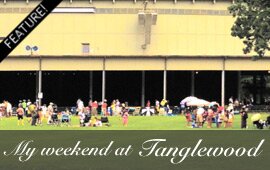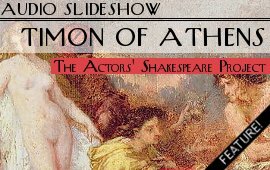
Virtual Street Corners, created by Boston artist John Ewing is scheduled to go live, 24/7, on June 8 at Brookline Booksmith in Coolidge Corner and Nubian Notion in Dudley Square. Videoconferencing terminals, transplanted from well-outfitted boardrooms to storefront windows, will connect the two sociologically disparate neighborhoods with audio and video, giving residents and denizens a chance to virtually converse and interact. Ewing ran a successful pilot of the project two years ago and has since been awarded grants, including the Knight News Challenge grant in support of creative journalism, as well as in kind donations to hone the operation and better connect the two communities that are so close (2.5 miles) and well connected by the 66 bus route, yet so far apart. Over the past two years, project logistics are about the only things that have changed in Brookline and Roxbury (neither Verizon nor Comcast served Dudley Square in 2008); it will be interesting to see what direction the conversation goes and if these communities do indeed become more neighborly over the next month.
QHow did the idea for this project originate?
AI did this project in 2001, actually that probably came from doing murals around the city of Boston. One thing I really loved about doing the murals was being on the street corner in different neighborhoods. I’d be there and I’d be painting over the course of two or three months usually. And people would just come up and start talking to you and I’d get to learn all about the neighborhood, I’d meet all these interesting characters and it was really interesting for me. And I liked that. But when I’d go to the next neighborhood, I’d talk about something I heard in the other neighborhood and people didn’t know what was going on in the neighborhoods that were very close to them, it just seemed kind of strange to me. So, Symphony of a City in some ways addressed that, we tried to take characters, eight different characters, from all over the city and wire them with web cams and have them go around and then put their lives up on the Internet. I think this was a similar concept of trying to find ways, using digital media, to connect these neighborhoods that seem like they’re out of touch with each other.
QWere Coolidge Corner and Dudley Square your first choices for places to install the project? Did you have any other location ideas?
AAt one point I was thinking about doing it between Tel Aviv and Ramallah and New York City. I actually got pretty far along in that process and I had folks who had suffered family deaths in each of the conflicts there and they were going to kick off the whole thing. And because of time differences, politics, a whole bunch of difficulties, in terms of logistics, it fell through. But I still thought it was a great idea. And I thought, well why don’t I do that at the local level, and like I said, it made a lot of sense from the work I’ve done before. So, I figure I’ll do it on the local level, if it’s successful, a lot of people have already come to me saying oh it’d be great if you did it here, you did it there, did it there. I think it’s a pretty easy to grasp concept and so people, when they hear about it, they immediately think of these other places because its true in all the cities around the US.

Dudley Sqare Travelers vs. Coolidge Corner Travelers (John Ewing)
QHow did you choose the videoconferencing sites in Coolidge Corner and Dudley Square?
AWe’ve been really fortunate in Coolidge Corner in that you have the Brookline Booksmith and it’s just worked in all kinds of ways. They’re an independent bookstore, they’re very supportive of the arts, they get speakers to come there, and they’re into encouraging dialogue, so it sort of fit very much into what they’re about and they’ve been great about supporting the project. And they have this little cove in the store where it’s set back a little from the street and creates this perfect place to install it. Coolidge Corner is a place where people are out late in the evening, especially in the summer.
One of the difficulties we’re going to have in Dudley Square is there are a lot of buses going by, it’s sort of a center because of the bus depot here, but they interrupt the conversation a lot because they’re so loud. And it’s very active in the day, but after five or six it tends to clear out because there’s not a lot of restaurants and places people can hang out. It tends to be a little desolate.
QWhat are your primary objectives for the project?
AI’d like to get a dialogue going between the two communities and allow people to define for themselves how they feel about their own community and maybe how they feel about the other community and get a back and forth going. It allows people to find the issues for themselves. In addition to dialogue, I hope they’ll actually get on the bus and go visit the other community and be there physically. Once they’ve established a connection talking, then hopefully they’ll go to the other places. Additionally, another goal is to raise important issues and get other media to cover those issues. Hopefully, through this project, people will raise things from each community that haven’t been addressed by the media or have been viewed differently in the media’s eyes and try to get it from citizens’ perspectives.
QHow do you plan on engaging the audience?
AIf you introduce topics that are interesting then it stimulates more conversation, so that’s the idea here. I have community organizers in each neighborhood who are going around and trying to find people to address different topics, like education, politics, youth talking to each other and criminal justice systems, to get dialogues going everyday in hope that other people will pick up on them and continue them. I also have three citizen journalists from each neighborhood who are going to do a daily report. Their job is to go around the neighborhood, try to see it from different perspectives and come back almost the same time everyday and give that report just as a way of allowing people to get a different perspective. Then you also see their reports online so you can go and follow each reporter as they go throughout the month.
We’re also going to have an interactive smaller screen, so you can text to it from your cell phone, we’ll be able to play video clips too. So you’ll have one live screen where people are communicating, but then you also have a side screen where other things can go on, the news reporters can show videos and photographs. It can actually pull down Tweets, so if people are Twittering in the neighborhood it can pull those messages down around a particular topic. The idea is to activate the screen in as many different ways as we can.
QDo you have a goal number of people to reach?
AObviously we’d like as many people as possible to come out. The idea is to make it really accessible. One of the things this project allows is a lot of people to participate in the conversation that may not go to the museums or might not go to different lectures at universities. It feels like it’s a much more on the street, accessible medium and it’s real easy for people to participate. And so we hope to engage all types of different people.
QWas a bus route/T track essential to the camera locations?
AI liked the fact that it emphasizes that it’s so easy to get back and forth. These two communities are connected with public transit and yet they don’t go back and forth. It’s clear that its not a logistical or transportation issue, it’s obviously some kind of social issue and that’s what I wanted to address.

Coolidge Corner photo from the June 2008 test installation (Ewing)

Dudley Square photo from the June 2008 test installation (Ewing)
QThe mapping project in 2008 was very striking, tell us about it. How did you select the participants?
AI felt like there are these two communities and people don’t go back and forth between them, but how do I visualize that for people, or get people to immediately see that in a concrete way? I had this idea; I’ll ask people in each location to draw in a map their route and how they got to either Dudley Square or Coolidge Corner that day. I just asked the first 25 people that came by, or that were willing to do it, and they drew their routes and it was much more dramatic than I even would have expected. It’s almost like there’s this line and nobody crosses over that line.
QDid you have any specific influences in creating Virtual Street Corners?
AThere certainly have been other similar projects like this such as in the 80s using satellite TV and a project where they connected New York and London with a . Those projects really focused on connecting communities over distance, so we can talk from east coast to west coast, and isn’t it great that we can do that with this technology. The thing that I think is different here is that I’m really trying to use it more to bridge a social divide rather than a distance divide. The sites that you choose to put the screens is also very important.
I think there’s this real push in the art world that you have to create these super original pieces and I really kind of work against that. I really think what’s important is: it effective? is it interesting? And certainly it’s going to be the first time in Boston, the first time for these neighborhoods. I’m sure ninety percent of the people who participate will never have heard of these other projects and that’s important for me. I think its sort of an influence of marketing or something where you have to create this product that’s brand new, and bigger and better. For me, what’s much more important is that it accomplishes something and it’s an interesting project.
For further information about Virtual Street Corners, check out the as well as Ewing’s as part of the PBS MediaShift Idea Lab.





This project generated some interesting words and images that are presented on the Virtual Street Corners website and are worth investigating. There’s economic disparity between parts of Greater Boston; that’s a reality we’re unable to make simply vanish. But it’s always good when someone challenges the notion that hefty social and emotional disconnections between local sub-communities and their people are an integral and unavoidable by-product of that. We, in this city, share more than we often realize.